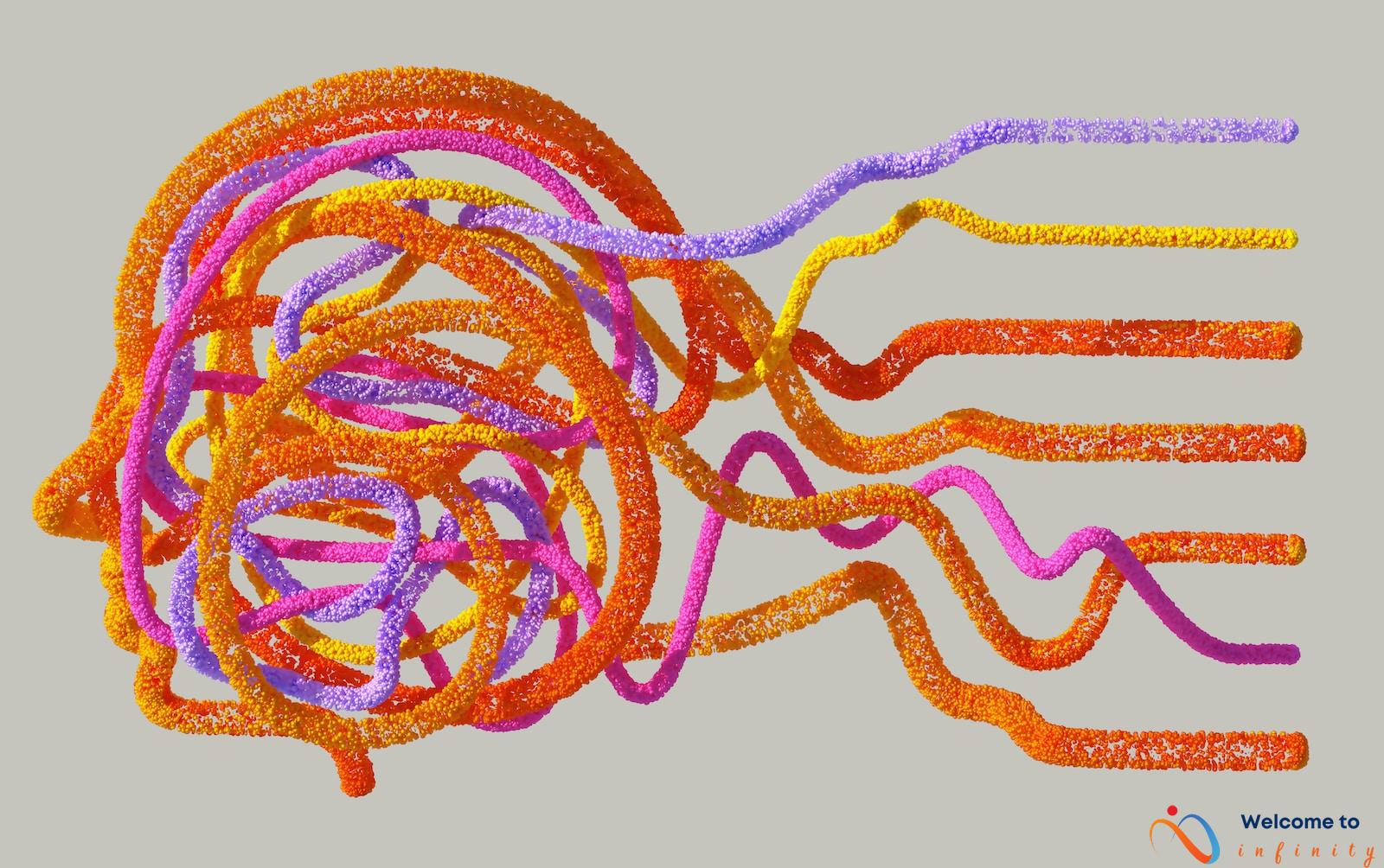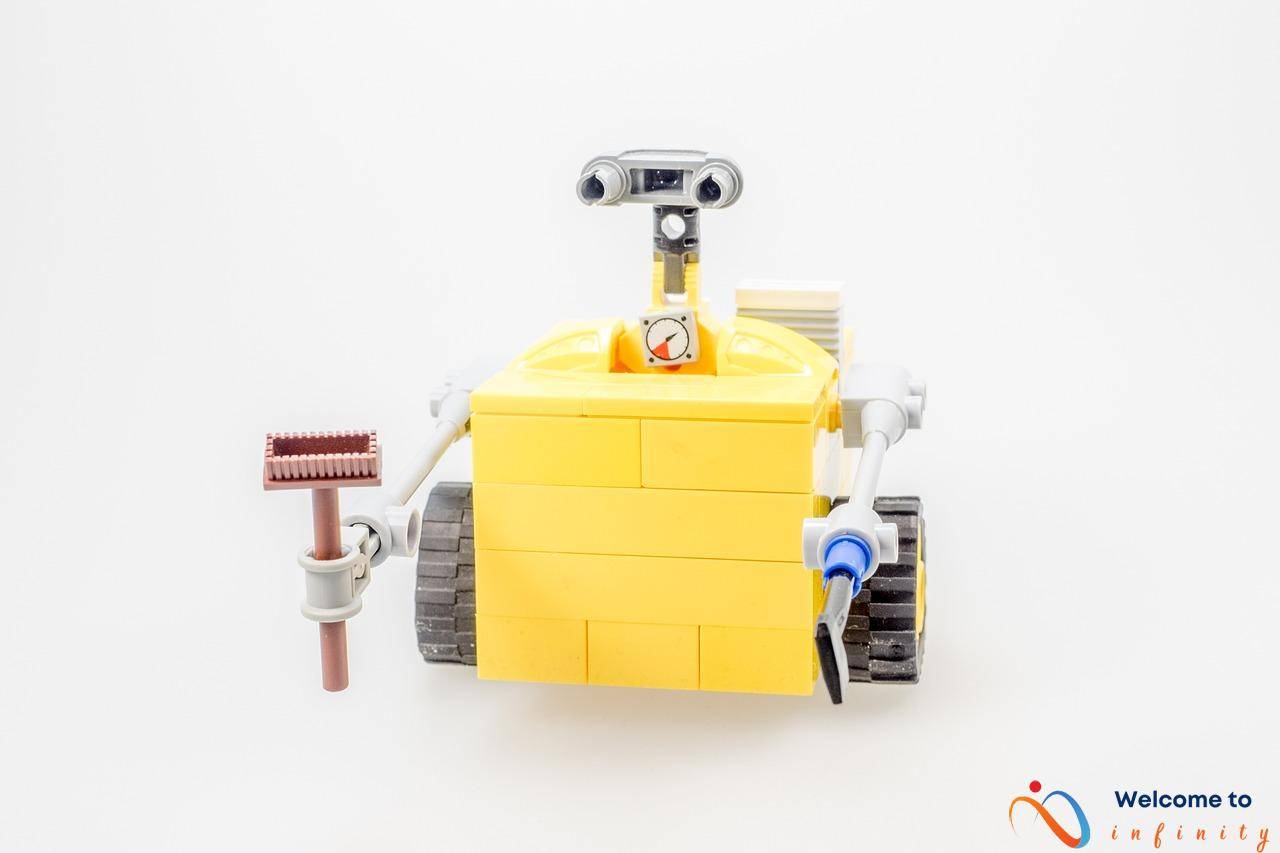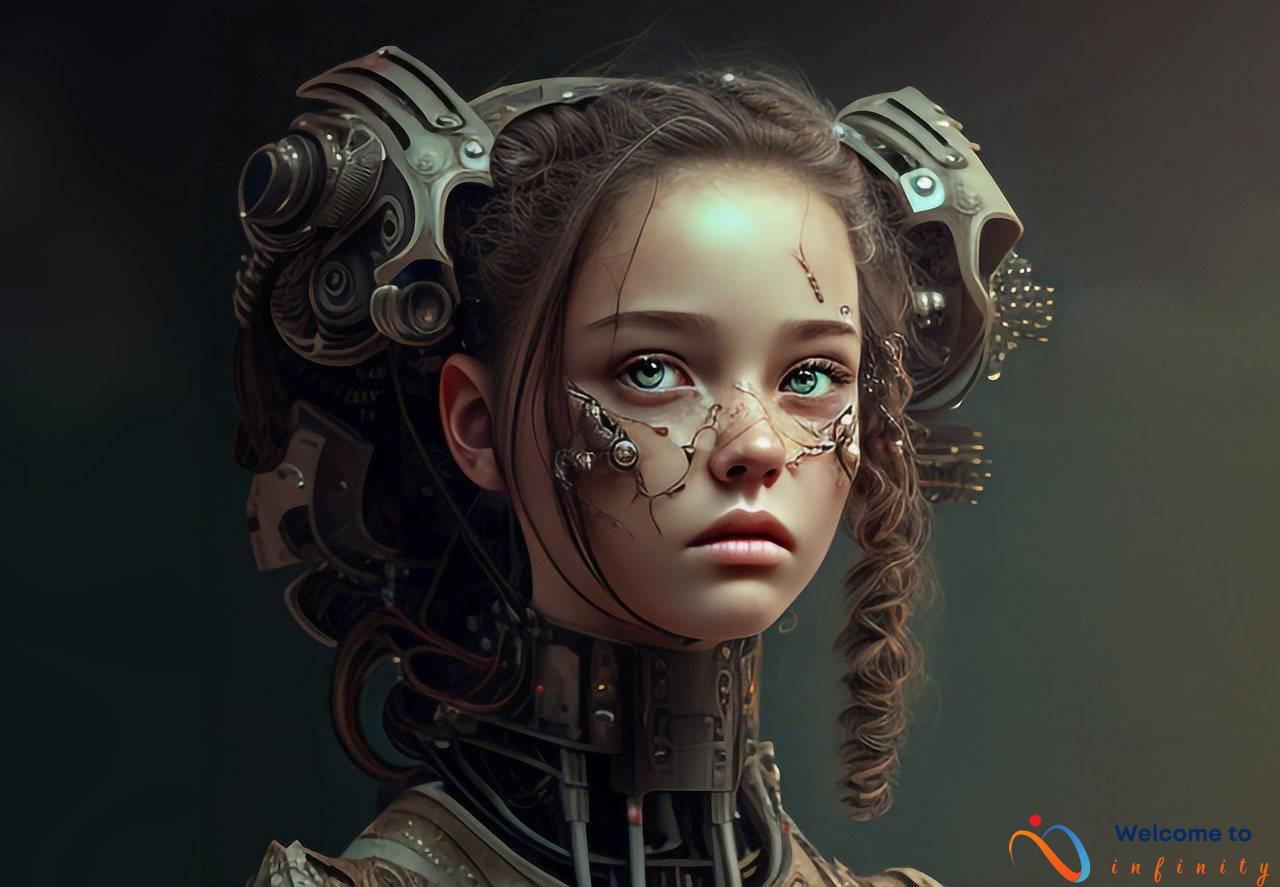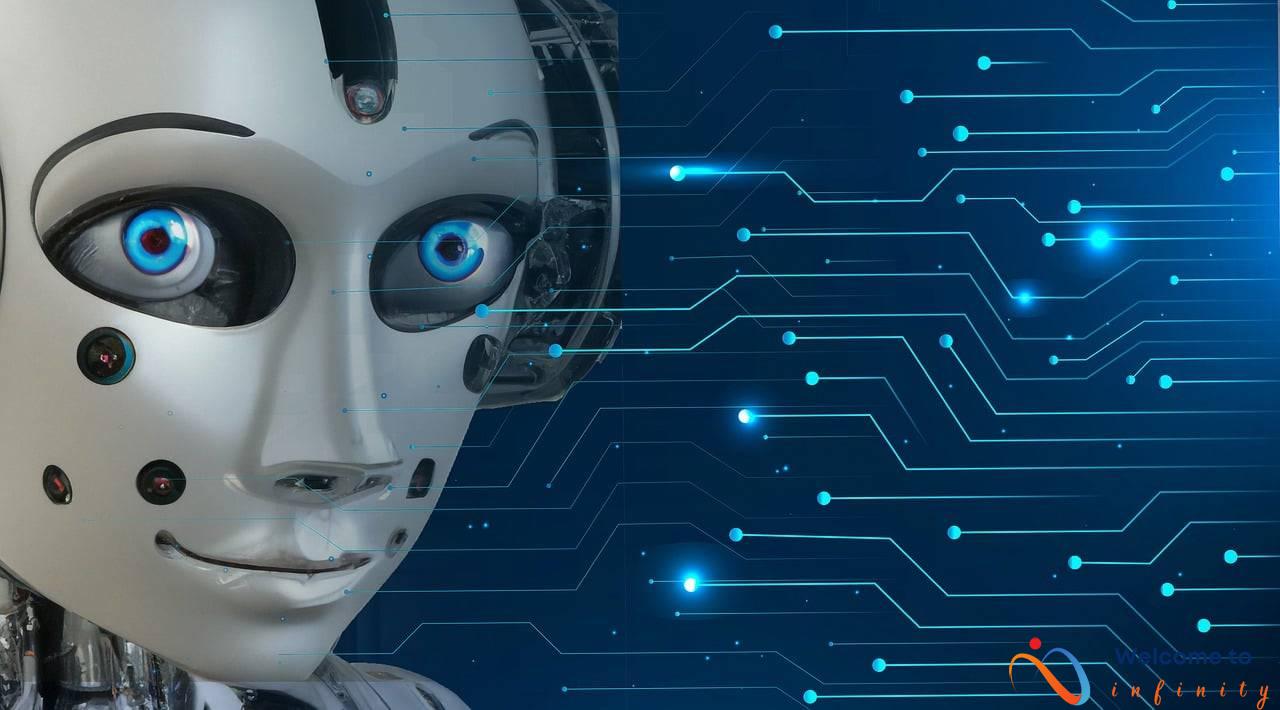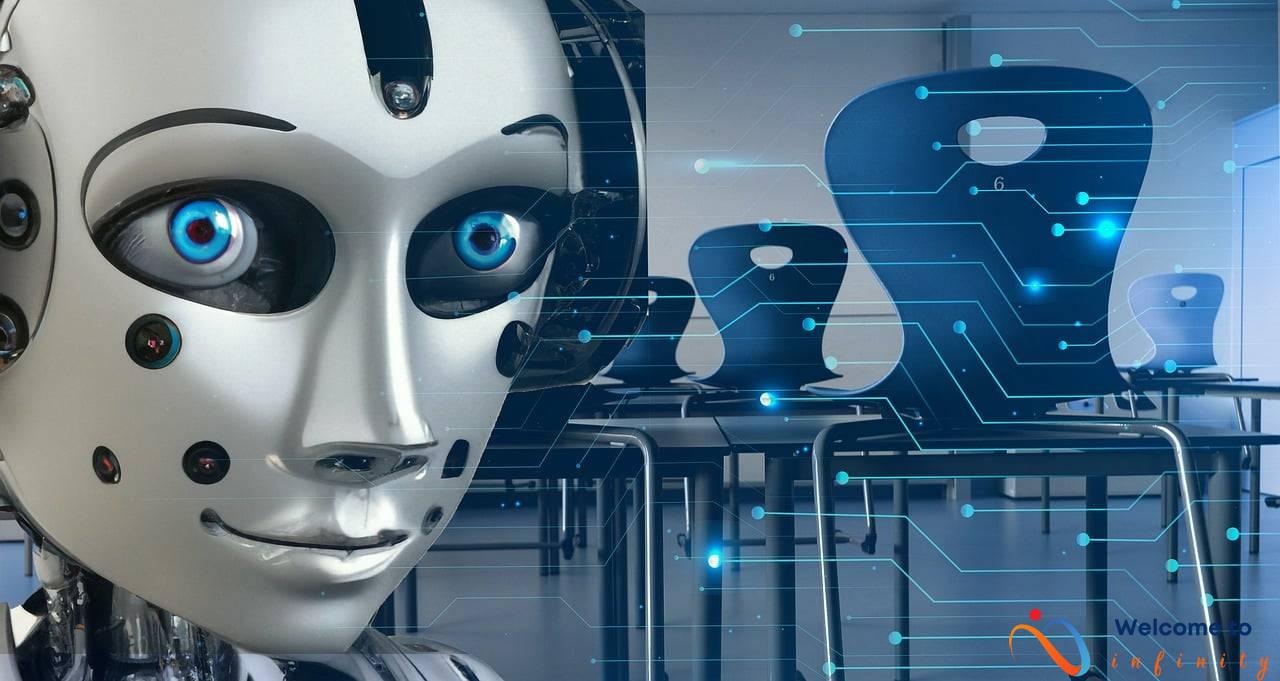Robotics and Artificial Intelligence are two of the most talked-about technologies in recent times. With the development of these technologies, the world is changing rapidly, and various industries are being significantly impacted. Robotics and AI are capable of performing tasks that were once considered impossible for machines to handle, and this has led to increased productivity, efficiency, and quality in various industries. This article will discuss the role of robotics and AI in shaping the future of various industries and explore the potential benefits and drawbacks that come with these technologies.
As technology continues to evolve, robots are becoming more sophisticated and are capable of performing tasks that require high-level skills. Robotics has led to automation of various tasks in industries such as manufacturing, agriculture, and healthcare, leading to increased productivity, efficiency, and safety for workers. Similarly, AI is bringing about new ways of solving problems, making decisions, and improving overall business operations. AI is increasingly being used in industries like finance, medicine, criminal justice, and education, among others.
However, the use of robotics and AI is not without its challenges. One of the most significant drawbacks of using robotics and AI is the potential for job displacement as these technologies replace various human jobs. The rapid advancement in robotics and AI has created a need for reskilling and upskilling of workers to adapt to the changing job market and avoid job loss. Additionally, there are ethical concerns related to the use of AI in decision-making, such as in healthcare and criminal justice, where transparency and accountability are essential.
Despite the challenges, the development and use of robotics and AI will undoubtedly have far-reaching effects on various industries and society as a whole. This article will explore the benefits and challenges of robotics and AI in different industries, along with emerging technologies and their potential impact. Ultimately, robotics and AI have the potential to revolutionize industries and drive innovation in various fields, making them essential tools for building the future.
The Benefits of Robotics and AI
The use of robotics and artificial intelligence (AI) has revolutionized the way businesses operate in different industries. The adoption of these technologies has resulted in numerous benefits such as increased productivity, improved product quality, and enhanced safety.
In the manufacturing industry, robotics has been instrumental in streamlining production processes, reducing inefficiencies, and increasing output. Robotic systems can perform tasks more accurately and efficiently than humans, resulting in fewer errors and less waste. Additionally, robots can work without breaks, which increases production efficiency and speeds up product delivery.
In healthcare, robotics and AI have contributed to more accurate diagnoses, more effective therapies, and better patient outcomes. Robots are being used to perform surgery with high precision, reducing the risk of complications. AI algorithms can analyze patient data to predict potential health issues, allowing doctors to take preventive measures before the condition worsens.
The use of robotics and AI has also improved safety in industries that involve hazardous work environments. For instance, robots can take on jobs that are hazardous to humans, such as working in situations with toxic chemicals or high temperatures. This improves workplace safety by reducing the risk of workplace injuries and fatalities.
Overall, the use of robotics and AI has significant positive impacts across different industries in terms of improving productivity, quality, and safety. By leveraging these technologies, businesses can operate more efficiently and effectively, leading to higher profits and better outcomes for everyone involved.
The Drawbacks of Robotics and AI
The use of robotics and AI in industries has several potential drawbacks that need to be considered. One of the significant concerns is the potential for robots and AI to replace human workers, leading to job displacement. As robots and AI become more advanced, they can perform tasks that were previously only possible for humans, such as manufacturing and customer service. This can mean that some jobs become obsolete, and many workers may lose their jobs as a result.
However, it is essential to note that while robots and AI have the potential to displace jobs, they can also create new opportunities for workers. As industries adopt these technologies, they will require a workforce that can operate and maintain them. This means that there will be a need for reskilling and upskilling of workers, allowing them to transition to new roles.
Another significant concern with AI is ethical considerations in decision-making processes. As AI becomes more prevalent in areas like healthcare and criminal justice, there is a pressing need to ensure that the decisions made are fair and unbiased. This also includes concerns about the accountability of these decisions.
To address these concerns, transparency and accountability are crucial in AI decision-making. Companies and governments need to ensure that they are open about the algorithms and data used in decision-making and provide explanations for their decisions. Additionally, regulation is necessary to ensure that AI technology is used ethically and to protect individual rights.
While there are potential drawbacks to the use of robotics and AI, their benefits cannot be ignored. It is essential to educate the workforce and the public on the benefits and drawbacks of these technologies and to continue exploring ways to use them ethically and responsibly.
Job Displacement
With the rise of robotics and artificial intelligence, there is a growing concern around the potential for job displacement. Many industries are already seeing automation replace certain tasks, with projections suggesting that as much as 60% of current jobs could be automated in the next few decades. While this could lead to increased productivity and cost savings for companies, it also raises serious questions around the future of work and the impact on workers.
One solution to this challenge is reskilling and upskilling of workers. As automation becomes more prevalent, there will be a growing need for workers with skills in related fields, such as robotics engineering or AI programming. Encouraging current workers to pursue training in these areas can help ensure they are able to adapt to changing job requirements and remain employable.
- In addition, policymakers and companies need to consider ways to support workers who are displaced by automation.
- This could include programs to provide education and training, financial support, and assistance with job placement or entrepreneurship.
- Ultimately, a collaborative effort from employers, government, and workers will be needed to successfully navigate the transition to an increasingly automated workforce.
It is important to note, however, that not all jobs are equally susceptible to automation. While tasks that are routine or repetitive are more likely to be automated, jobs that require complex problem-solving, creativity, and interpersonal skills are less likely to be replaced by robots or AI. Therefore, it is essential to emphasize education and training in these areas to ensure that workers are equipped with the skills that will be in demand in the new era of automation.
The Future of Work
The increasing integration of robotics and AI into various industries is rapidly changing the nature of work. While there are concerns about job displacement, there are also many opportunities that these technologies present for workers. In order to adapt to this new era, workers will need to reskill and upskill to remain competitive in the job market.
One positive aspect of robotics and AI in the workplace is the potential for increased efficiency and productivity. With the ability to automate tedious tasks, workers can focus on more creative and fulfilling work. Additionally, these technologies can ensure higher-quality work and increased workplace safety.
However, the use of robotics and AI may lead to job displacement for workers in some industries. To address this, there is a need for reskilling and upskilling programs that enable workers to transition to jobs that require human skills that cannot be easily replicated by machines. This includes jobs that require critical thinking, creativity, and emotional intelligence.
Despite the challenges, the adoption of robotics and AI in the workforce also presents numerous opportunities for workers. The demand for skilled workers who can design, build, and maintain these technologies is growing, creating new job opportunities. Additionally, these technologies can lead to the development of new industries and entirely new job categories.
The future of work will require workers to continuously adapt to new technologies and be willing to learn new skills. It is important for individuals, companies, and governments to invest in training and education programs that prepare workers for the changing job market. By doing so, we can ensure that workers are not left behind in the era of robotics and AI.
The Impact on Society
While robotics and AI have the potential to increase productivity and improve product quality, there is also a concern about the impact on employment, wages, and income inequality. Many jobs that are currently performed by humans could be automated, leading to job displacement and a shift in the workforce. This can disproportionately affect certain jobs and industries, particularly those that require manual labor or routine tasks.
Income inequality can also increase as a result of automation, as those who are able to maintain jobs in high-tech industries may earn higher wages than those who have been displaced. This can have a ripple effect on the economy as a whole, as decreased consumer spending and a reduction in the tax base can harm the economy.
However, while there may be challenges in the short-term, robotics and AI have the potential to create new jobs and drive economic growth in the long-term. For example, the development and maintenance of these technologies can create new high-tech jobs that require advanced skills and training. Additionally, the increased productivity and cost savings that robotics and AI can bring to businesses can lead to growth and expansion, which can create jobs in related areas.
It is important to address the potential negative impact of job displacement by providing reskilling and upskilling opportunities to workers, as well as creating policies and programs that support displaced workers. Furthermore, policies that promote innovation and investment in emerging technologies can help ensure that the benefits of automation are widely distributed throughout society.
Ethical Concerns
As robotics and AI continue to evolve and become more integrated into various industries, it is important to address the potential ethical concerns that come with their use. One major area of concern is in the decision-making processes of AI, particularly in fields such as healthcare and criminal justice.
In healthcare, the use of AI in making diagnoses and treatment decisions raises questions about the potential biases and limitations of these systems. For instance, if an AI system is trained on data sets that are not representative of the entire population, it could lead to incorrect or even harmful recommendations for certain groups of patients.
Similarly, in criminal justice, the use of AI in risk assessments and sentencing recommendations can perpetuate existing biases and inequalities in the justice system. This can have a particularly negative impact on marginalized communities who are already disproportionately affected by discrimination and systemic issues.
To address these ethical concerns, it is important for companies and governments to prioritize transparency and accountability in the design and implementation of AI systems. This can include measures such as ensuring data sets are representative and diverse, allowing for human oversight and review of AI decisions, and regularly monitoring and addressing any biases that may arise.
Regulation will also play a crucial role in preventing potential abuses of AI technology and protecting individual rights. This may involve establishing clear guidelines and standards for AI systems, as well as assessing the potential risks and benefits of their use in different contexts.
Overall, while the use of robotics and AI has the potential to revolutionize industries and improve our daily lives, it is important to address the ethical implications of their decision-making processes. Through proactive measures and responsible regulation, we can ensure that these technologies are used in ways that are beneficial and ethical for all.
Transparency and Accountability
As AI becomes more involved in decision-making, it's important that companies and governments ensure transparency and accountability in the process. One way to do this is to create clear guidelines and regulations on how AI should be used and how its outcomes should be reported. Companies can also take steps to ensure that their AI systems are fair and unbiased, such as auditing their algorithms to detect and correct any biases they may have.
Another important aspect of transparency and accountability in AI decision-making is ensuring that individuals are aware of when an AI system is being used to make a decision that affects them. This includes providing clear and understandable explanations for the decisions made by AI systems. For instance, if an AI system is used to decide whether a person is eligible for a loan, the individual should have access to the factors that were used in the decision-making process.
Finally, it's essential to ensure that individuals are able to contest decisions that were made by AI systems. This can be achieved by creating an avenue for individuals to appeal decisions they believe were incorrect or unfair. Additionally, companies and governments can ensure greater accountability by providing access to data used to train their AI systems and allowing third-party auditors to analyze their algorithms for biases.
In summary, transparency and accountability are critical considerations in the development and implementation of AI decision-making systems. Companies and governments must take steps to ensure that decision-making is fair, unbiased, and easily contestable. By doing so, we can help ensure that AI is used in a responsible and beneficial manner for all.
The Role of Regulation
The rise of AI technology has brought about concerns regarding its potential misuse and abuse. To address these concerns, many are advocating for the need for regulation. Regulation can play a critical role in ensuring that AI technology is developed and used responsibly and ethically.
The regulation of AI technology can prevent its misuse for malicious purposes and ensure that individual rights are protected. One area of concern is the potential use of AI in surveillance and policing, which can lead to violations of privacy rights. Regulations can ensure that the use of AI in these areas is monitored and does not infringe on individual rights.
Moreover, regulations can ensure transparency in AI decision-making. Companies and governments need to be accountable for the impact of AI technology on society. They need to be transparent about the data used to train AI systems, the algorithms used, and the results of those algorithms.
At the same time, regulations can prevent the potential abuse of AI technology by certain actors or groups. This includes the prevention of the development of autonomous weapons systems and the implementation of regulations on the use of AI in the financial sector. Regulations can ensure that AI technology is developed and used in a way that benefits society as a whole and not just a select few.
In conclusion, regulations are necessary to prevent potential abuses of AI technology and protect individual rights. They can ensure transparency and accountability in AI decision-making, prevent the misuse of AI for malicious purposes, and promote the responsible development and use of AI technology. Going forward, regulations will play a critical role in shaping the future of AI and its impact on society.
The Future of Robotics and AI
The future of robotics and AI is a rapidly evolving field of research and development. Recent technological breakthroughs have paved the way for new and exciting applications in various industries, including healthcare, finance, and education. For example, in healthcare, robots are being developed for tasks such as patient care, surgery, and drug delivery. These developments have the potential to revolutionize the healthcare industry, making medical treatments more efficient and less invasive.
In finance, AI is being used to improve financial decision-making, fraud detection, and personalized banking services. These applications of AI have the potential to make financial services more accessible and efficient for customers. Additionally, in education, robots are being developed to improve learning outcomes and teacher effectiveness in the classroom. These robots can assist teachers in tasks such as grading papers, providing feedback, and creating personalized learning plans for students.
However, with these emerging technologies come numerous challenges and ethical concerns. It's important to consider the potential impact of robotics and AI on society as a whole. Job displacement is a major concern, as robots and AI have the potential to replace certain jobs. The workforce will need to adapt to the new era of robotics and AI, and the opportunities created by these technologies. Furthermore, AI decision-making can have ethical implications in areas such as healthcare and criminal justice. Companies and governments must work to ensure transparency and accountability in AI decision-making while protecting individual rights through regulations.
In conclusion, the future of robotics and AI holds immense potential for various industries. While there are certainly challenges to be addressed, we can anticipate numerous positive outcomes from the development and integration of these technologies. The key to achieving the benefits while mitigating the drawbacks is thoughtful and responsible regulation and implementation of these technologies.
Robotics in Healthcare
Advancements in robotics and AI have opened up a world of possibilities in healthcare. Robots can be utilized in various aspects of patient care, surgery, and drug delivery, improving the efficiency and accuracy of these processes.
In patient care, robots can assist with tasks such as taking vital signs, administering medication, and transporting patients. This frees up time for healthcare professionals to focus on other aspects of patient care and ensures that time-consuming tasks are completed accurately and efficiently.
In surgery, robots have already begun to play an important role. Robotic surgical systems allow for more precise incisions and greater control during procedures. This decreases the risk of complications and can shorten recovery times for patients. In addition, robots can be used to perform surgeries in hard-to-reach areas of the body, such as the brain.
Drug delivery is another area where robots can make a difference. Pharmaceutical companies are exploring the use of robots to manufacture drugs, which can increase efficiency and reduce the risk of human error. In addition, robots can accurately dispense medication, ensuring that patients receive the correct dose at the correct time.
Overall, the use of robotics and AI in healthcare has the potential to revolutionize the industry. While there are still challenges to be addressed, such as concerns about job displacement and the need for proper training of healthcare professionals, the benefits of these technologies cannot be ignored.
AI in Finance
Artificial intelligence (AI) has the potential to revolutionize the finance industry, transforming financial decision-making, fraud detection, and personalized banking services. With AI, financial institutions can analyze vast amounts of data to identify patterns and make decisions faster and more accurately than humans ever could. This has significant implications for businesses and consumers alike.
One area where AI is already making an impact in finance is in fraud detection. Machine learning algorithms can analyze large volumes of transactions and identify abnormal patterns that indicate fraudulent activity. This allows banks and other financial institutions to take action quickly and prevent fraud before it happens.
AI can also help improve financial decision-making. Robo-advisors are becoming increasingly popular as they use AI algorithms to analyze investment opportunities and make recommendations based on an individual's financial goals and risk tolerance. This allows individuals to make informed investment decisions without needing to consult a financial advisor.
Personalized banking services are another area where AI can make significant improvements. Banks are using machine learning algorithms to analyze customer data and offer personalized product and service recommendations based on their preferences and spending habits.
Despite the many benefits of AI in finance, there are also potential drawbacks. One concern is the possible displacement of human workers as machines take over tasks traditionally done by humans. However, it's important to note that AI is not a replacement for human expertise and there will always be a need for human oversight and intervention.
Overall, AI has great potential to improve financial decision-making, fraud detection, and personalized banking services. However, it's important to consider the potential risks and take steps to ensure that AI-powered financial services are used responsibly and ethically.
Robotics in Education
Robots are increasingly being used in the classroom to enhance the learning experience and help students explore complex concepts in a more interactive and engaging way. With the help of robots, teachers can create a more personalized learning environment that caters to the needs of each student.
One way robots are being used in education is by helping students learn coding skills. By programming robots to perform certain tasks, students gain hands-on experience with coding and develop problem-solving skills. Additionally, robots can teach students about physics, engineering, and other STEM-related subjects through interactive and fun activities.
Moreover, robots can assist teachers by taking over some tasks, giving more time and energy for instruction and providing an opportunity for self-paced learning. Robotic teaching assistants can help with grading assignments, answering students' common questions or provide additional examples. This way, teachers can save time and focus on addressing the specific needs of each student instead of administrative tasks.
Despite all the benefits, some concerns must also be addressed before introducing robots to the classroom. Teachers need the necessary training and guidance to use robots effectively in their classrooms. Robotic technology must be accessible and widely available to all schools, especially in underprivileged areas that face economic challenges.
- In conclusion, robotics in education offers numerous possibilities to improve the learning experience and increase teacher effectiveness. It's up to educators to recognize the potential and implement the right tools to prepare future generations for the digital age.
Conclusion
Robotics and artificial intelligence are two of the most transformative technologies that will shape our future. While these technologies offer a wide range of benefits, including improved productivity, quality, and safety in various industries, they also come with their drawbacks, such as job displacement and ethical concerns.
However, the potential of robotics and AI to revolutionize industries such as healthcare, finance, and education is undeniable. For example, robots can improve patient care and surgery outcomes in healthcare, while AI can enhance financial decision-making and personalized banking services in finance.
As we move towards a more automated future, the workforce will need to adapt to the changing landscape. While job displacement is a real possibility, there is also an opportunity to reskill and upskill current workers to fill in-demand roles and create new ones in emerging industries.
Ethical concerns around AI decision-making are also critical to address. Transparency and accountability can play a crucial role in ensuring that AI is used in a responsible and ethical manner, while proper regulation can help prevent potential abuse of the technology while protecting individual rights.
In conclusion, the potential benefits and challenges of robotics and AI are vast and will significantly shape the future of various industries. With proper consideration and responsible usage, we can harness the power of these technologies to create a better tomorrow for all.






